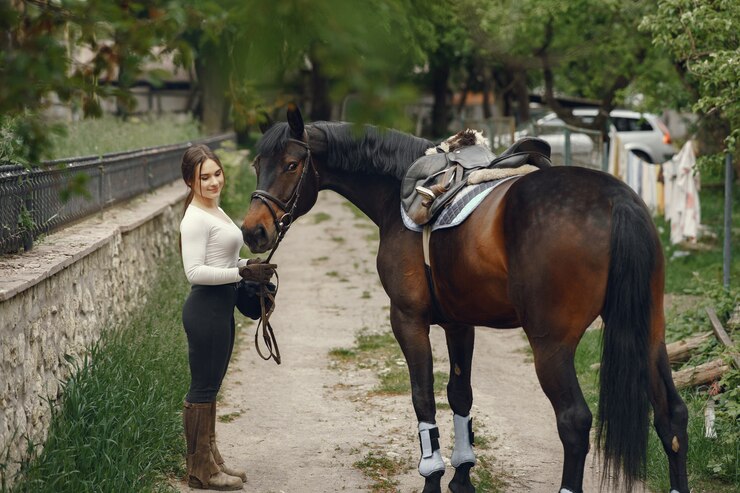Hobby horse riding is a whimsical and increasingly popular pastime that blends creativity, athleticism, and community spirit. What once began as a children’s toy has evolved into a sport enjoyed by people of all ages. This article delves into the world of hobby horse riding, exploring its history, the art of crafting and riding hobby horses, the benefits of the activity, and how it has become a global phenomenon.
The Origins of Hobby Horse Riding: A Historical Perspective
From Toy to Tradition
Hobby horse riding has its roots in ancient history, with the concept of a “stick horse” appearing in various cultures as early as the 16th century. Initially, these simple wooden toys, often just a stick with a carved horse head, were used by children in playful mimicry of real horseback riding. Over time, the hobby horse became more elaborate, with intricate designs and detailed craftsmanship. Horseback riding
In medieval Europe, hobby horses were also used in festivals and parades, where they symbolized chivalry and nobility. The tradition of riding hobby horses in celebrations like May Day festivities helped cement their place in popular culture. While the hobby horse began as a child’s plaything, its evolution into a structured and competitive activity is a relatively recent phenomenon.
The Modern Revival
The modern hobby horse riding movement began in Finland in the early 2000s, where it quickly gained popularity among young people. What started as a niche activity soon grew into a vibrant subculture, complete with organized competitions, clubs, and social media communities. The sport has since spread to other countries, attracting participants of all ages who are drawn to its blend of creativity, physical exercise, and camaraderie.
In Finland, hobby horse riding has become particularly popular among teenage girls, who often craft their own horses and choreograph intricate routines. The activity provides a way to engage in equestrian sports without the high costs and responsibilities associated with owning a real horse. As the sport gained traction, it began to attract media attention, leading to documentaries, books, and even international competitions.
The Art of Crafting Hobby Horses: Creativity Meets Tradition
Materials and Techniques
Crafting a hobby horse is an art form in itself, requiring creativity, patience, and attention to detail. Hobby horses can be made from a variety of materials, including wood, fabric, felt, and leather. The process often begins with choosing a stick or pole, which serves as the “body” of the horse. The head is usually crafted separately, using materials like fabric or felt to create a lifelike appearance.
Many hobby horse enthusiasts take pride in personalizing their creations, adding details like manes, bridles, and saddles. Some even paint or embroider unique markings to give their horses distinct personalities. The crafting process can take hours or even days, depending on the complexity of the design. For many, the creation of the hobby horse is as enjoyable as the riding itself.
The Role of Tradition
While modern hobby horse riding is a relatively new phenomenon, it draws on a rich tradition of craftsmanship and folklore. In some cultures, the hobby horse is associated with ancient rituals and festivals, where it was used to ward off evil spirits or bring good fortune. Today, hobby horse riding combines these traditional elements with contemporary creativity, resulting in a unique and culturally rich activity.
In Finland, where the modern hobby horse movement began, there is a strong emphasis on preserving the traditional aspects of the craft. Workshops and classes are often held to teach newcomers the techniques of hobby horse making, ensuring that the skills are passed down through generations. This blend of tradition and innovation is one of the reasons why hobby horse riding has resonated with so many people.
The Physical and Mental Benefits of Hobby Horse Riding
A Fun Way to Stay Active
Hobby horse riding is more than just a fun pastime; it’s also a great way to stay physically active. The sport requires participants to engage in a range of physical activities, from jumping and running to balancing and maneuvering the hobby horse. These movements help improve coordination, balance, and overall fitness.
In competitive hobby horse riding, participants often perform routines that include jumps, cantering, and other equestrian-inspired movements. These routines can be quite physically demanding, providing a full-body workout. For those who may not have access to traditional sports or exercise opportunities, hobby horse riding offers a creative and accessible way to stay active.
Building Confidence and Self-Esteem
One of the most significant benefits of hobby horse riding is the boost it provides to confidence and self-esteem. The sport encourages participants to set goals, practice regularly, and showcase their skills in front of others. Whether it’s mastering a new jump or performing a routine in a competition, the sense of accomplishment that comes from hobby horse riding can be incredibly empowering.
For many participants, especially young people, hobby horse riding provides a safe and supportive environment where they can express themselves and build social connections. The sport is inclusive and welcoming, allowing people of all skill levels to participate and enjoy the experience. This sense of belonging and achievement can have a positive impact on mental health and overall well-being.
Competitive Hobby Horse Riding: From Local Events to Global Competitions
The Structure of Competitions
Competitive hobby horse riding has evolved into a structured sport with rules, categories, and scoring systems. Competitions typically include various events such as show jumping, dressage, and obstacle courses. Participants are judged on factors like technique, creativity, and the presentation of their hobby horse.
Show jumping involves navigating a course of jumps, much like in traditional equestrian events. Dressage focuses on the precision and grace of movements, with riders performing choreographed routines to music. Obstacle courses challenge participants to maneuver their hobby horses through a series of physical challenges, testing their agility and control.
The Rise of International Competitions
As hobby horse riding gained popularity, local competitions began to give way to regional, national, and even international events. In Finland, the annual Hobby Horse Championships attract hundreds of participants and spectators, showcasing the best talent in the sport. These competitions have become major social events, with participants often traveling from other countries to compete.
The rise of social media has played a significant role in the global spread of hobby horse riding. Platforms like Instagram, YouTube, and TikTok have allowed enthusiasts to share their routines, crafting tips, and competition experiences with a worldwide audience. This online community has helped bring together hobby horse riders from different cultures and backgrounds, further fueling the sport’s growth.
The Social and Cultural Impact of Hobby Horse Riding
A Movement for Empowerment and Inclusion
Hobby horse riding has become more than just a sport; it’s a movement that promotes empowerment, inclusion, and creativity. The sport’s inclusive nature allows people of all ages, genders, and backgrounds to participate, breaking down barriers that often exist in traditional sports. This inclusivity has been particularly impactful for young girls, who make up a significant portion of the hobby horse riding community.
In many ways, hobby horse riding challenges conventional ideas about what sports should be. It blurs the lines between play and competition, creativity and athleticism, allowing participants to engage in an activity that is both fun and meaningful. This flexibility and openness have made hobby horse riding a powerful tool for self-expression and community building. For more information visit my website finalizeit
The Role of Media and Pop Culture
The popularity of hobby horse riding has been bolstered by its presence in media and pop culture. Documentaries like “Hobbyhorse Revolution” have brought attention to the sport, highlighting the passion and dedication of its participants. The film’s portrayal of hobby horse riding as a serious and legitimate activity helped shift public perception and attract new enthusiasts.
In addition to documentaries, hobby horse riding has also been featured in various news outlets, magazines, and social media campaigns. This increased visibility has helped the sport gain recognition and respect, while also inspiring new generations to take up the hobby. The influence of media and pop culture has played a crucial role in transforming hobby horse riding from a niche activity into a global phenomenon.
How to Get Started with Hobby Horse Riding: A Beginner’s Guide
Choosing Your Hobby Horse
For those interested in starting hobby horse riding, the first step is choosing or crafting your own hobby horse. Many enthusiasts prefer to make their own, as it allows for personalization and creativity. However, there are also plenty of pre-made hobby horses available for purchase, ranging from simple designs to more elaborate and detailed models.
When choosing a hobby horse, consider factors like the materials, size, and weight. A well-balanced hobby horse will be easier to ride and maneuver. If you’re crafting your own, you can experiment with different materials and designs to find what works best for you. Many online tutorials and workshops are available to help beginners create their first hobby horse.
Learning the Basics
Once you have your hobby horse, it’s time to learn the basics of riding. Start by practicing simple movements like walking, trotting, and turning. As you become more comfortable, you can progress to more advanced techniques like jumping and performing routines. The key is to practice regularly and have fun with the process.
Many hobby horse riders join local clubs or online communities where they can learn from others and share their progress. These communities are often supportive and welcoming, providing a great environment for beginners to grow their skills. Whether you’re interested in competing or just riding for fun, hobby horse riding offers a flexible and enjoyable way to stay active and creative.
The Future of Hobby Horse Riding: Trends and Innovations
Growing Popularity and Global Expansion
The future of hobby horse riding looks bright, with the sport continuing to grow in popularity around the world. As more people discover the joy and benefits of hobby horse riding, we can expect to see new clubs, competitions, and communities emerging in different countries. The sport’s global expansion will likely lead to more diversity in styles, techniques, and approaches, enriching the hobby horse riding experience.
The rise of digital platforms will also play a significant role in the sport’s future. Online competitions, virtual meetups, and social media challenges are


